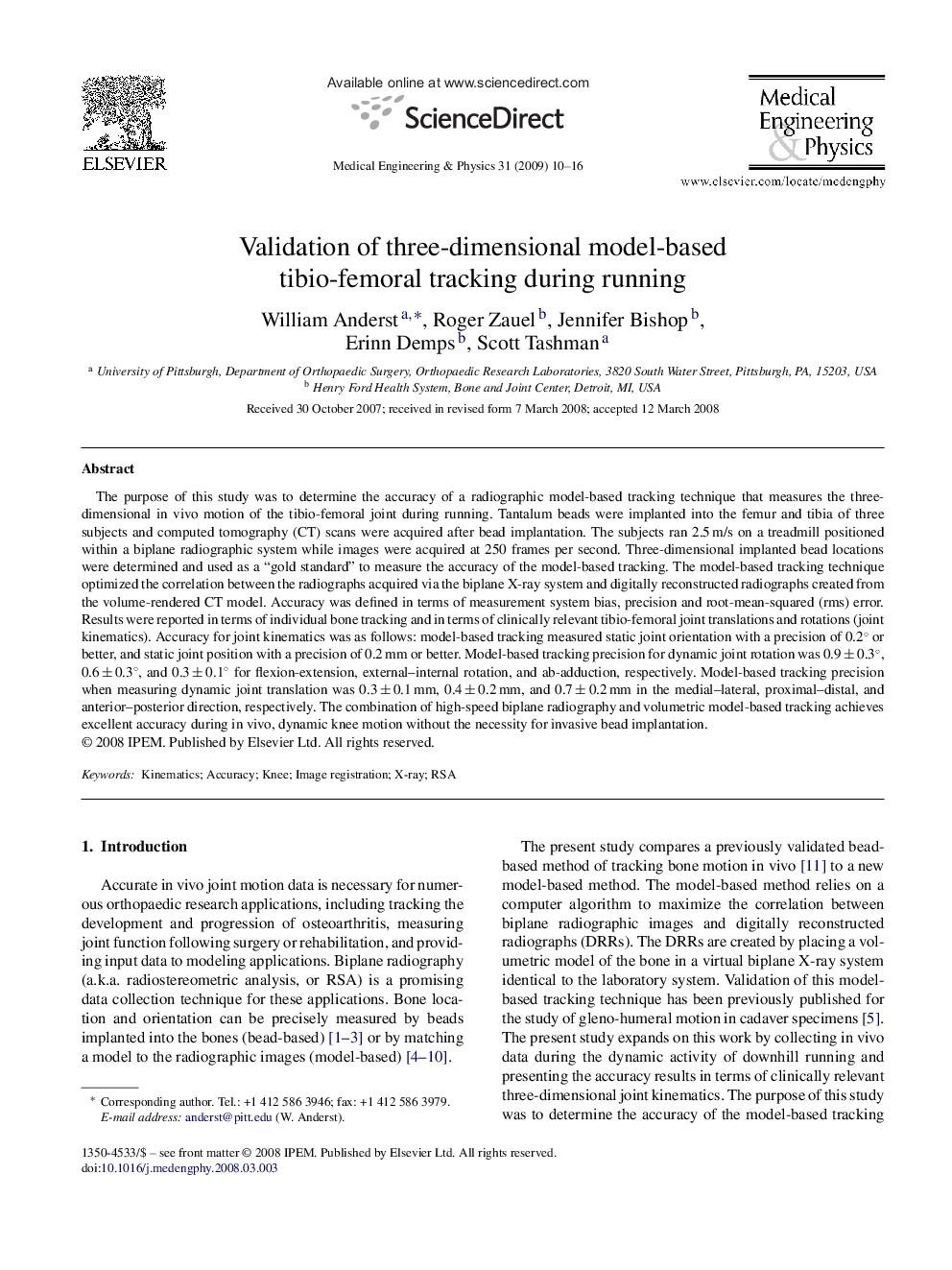| کد مقاله | کد نشریه | سال انتشار | مقاله انگلیسی | نسخه تمام متن |
|---|---|---|---|---|
| 876840 | 910868 | 2009 | 7 صفحه PDF | دانلود رایگان |

The purpose of this study was to determine the accuracy of a radiographic model-based tracking technique that measures the three-dimensional in vivo motion of the tibio-femoral joint during running. Tantalum beads were implanted into the femur and tibia of three subjects and computed tomography (CT) scans were acquired after bead implantation. The subjects ran 2.5 m/s on a treadmill positioned within a biplane radiographic system while images were acquired at 250 frames per second. Three-dimensional implanted bead locations were determined and used as a “gold standard” to measure the accuracy of the model-based tracking. The model-based tracking technique optimized the correlation between the radiographs acquired via the biplane X-ray system and digitally reconstructed radiographs created from the volume-rendered CT model. Accuracy was defined in terms of measurement system bias, precision and root-mean-squared (rms) error. Results were reported in terms of individual bone tracking and in terms of clinically relevant tibio-femoral joint translations and rotations (joint kinematics). Accuracy for joint kinematics was as follows: model-based tracking measured static joint orientation with a precision of 0.2° or better, and static joint position with a precision of 0.2 mm or better. Model-based tracking precision for dynamic joint rotation was 0.9 ± 0.3°, 0.6 ± 0.3°, and 0.3 ± 0.1° for flexion-extension, external–internal rotation, and ab-adduction, respectively. Model-based tracking precision when measuring dynamic joint translation was 0.3 ± 0.1 mm, 0.4 ± 0.2 mm, and 0.7 ± 0.2 mm in the medial–lateral, proximal–distal, and anterior–posterior direction, respectively. The combination of high-speed biplane radiography and volumetric model-based tracking achieves excellent accuracy during in vivo, dynamic knee motion without the necessity for invasive bead implantation.
Journal: Medical Engineering & Physics - Volume 31, Issue 1, January 2009, Pages 10–16